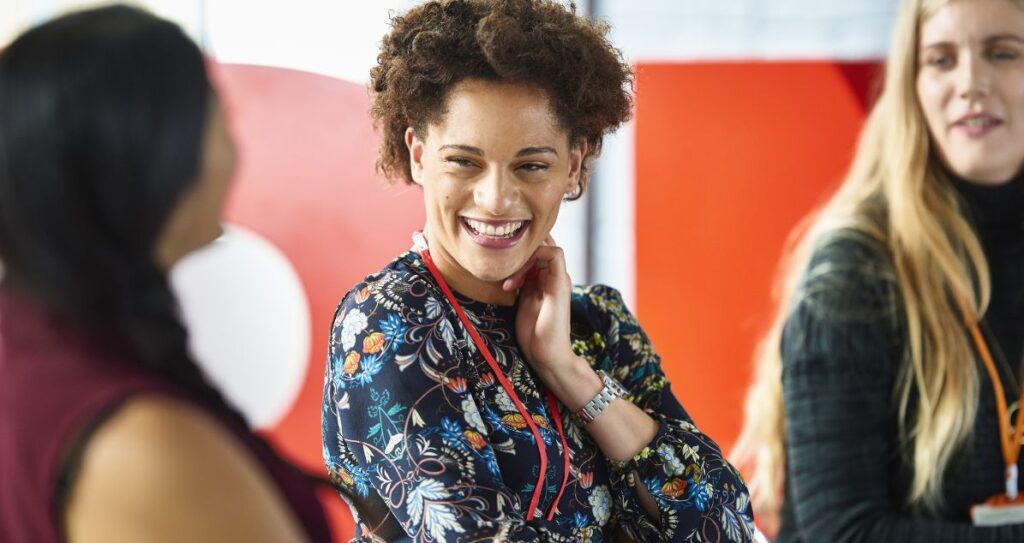
“Leave your emotions at the door.”
It’s a sentiment professionals often hear. But in reality, your emotions are valuable wayfinders that can help you navigate toward a shared vision and achieve desired results.
At Barefoot, we believe that every meaningful interaction between a brand and its customer starts with a well-defined business or brand vision. We often partner with clients to ensure their vision is optimal. This is important, nuanced work, and it means something different for each client. A carefully crafted, emotionally positive partnership helps personalize what that future state means for their unique business.
Our first step toward creating impactful moments is to crystallize a shared vision. Emotional openness is the prerequisite here; it is nearly impossible to visualize and align on aspirations and possibilities for your brand without feeling the future you want to achieve.
Unlike many agencies that are hired to solve current-state problems or tackle one-off projects, Barefoot digs deeper for solutions that possess longevity. This is where having a shared vision becomes critical. We start with honest conversations around your brand’s values and aspirations. We encourage an optimistic, emotionally open state of mind by asking you to revisit your brand origination story or share inspiration from your original purpose. As we listen to each other, share ideas and link current-state efforts to a cohesive set of possibilities, that shared vision — our North Star — is formed.
It’s more than goals, more than problem-solving, more than a next step. A shared vision defines all decisions moving forward. It is a living idea of achievement.
An important component in creating a shared vision is understanding the mindset of all parties while creating it. To ensure change is long-lasting, it should be linked to a positive emotional state, anchored in optimism, values and the emotionally charged vision of an ideal future.
If that sounds a little woo-woo, hear us out. The science behind the power of positivity is striking: Possessing a positive emotional state, known as a Positive Emotional Attractor (PEA), can contribute to high levels of optimism about the future,1 make us more open to making behavioral changes2 and encourage cooperation.3
Research has also revealed links between positive emotions and the neurological state created when an individual is in this mindset for an extended period. As with the exercise of revisiting a brand’s purpose or origin story, positive emotions bring us into a state of mind that encourages partnership and optimism for future outcomes — in other words, a ready-made recipe for lock-step collaboration, better work and long-standing results.
Those icebreakers at the beginning of every workshop you’ve ever attended? They’re not just meant to lighten the mood before the tough work begins. Activities that pull us out of our comfort zones and encourage us to share with each other are intentionally designed to lay the foundation for a positive experience of collaboration. Even as we’re conscious of the problems we need to solve, the initial effort to break down walls and evoke positivity sets us up for an ideal outcome.
We create our best work when we share the same space of positivity and the same high hopes for the future. When we come together as a team to share our visions for future achievements, we’re also generating the neurological and emotional factors best suited to creating compelling ideas and forging common bonds.
So, how can you reach PEA, both individually and within your organization? For starters, don’t leave your emotions at the door. Instead, encourage your team to intentionally use the emotions that trigger PEA: compassion, positivity and openness to others. Any brand can plan for future success, but unless you truly tap into the idea of visualizing transparently as a unified team, you won’t be able to fully activate the power of doing so.
As difficult as it might seem to practice emotional vulnerability, it’s critical for long-lasting success. At Barefoot, we know from experience that the best client-agency partnerships are formed when we’re open with each other. We achieve the most when we share our dreams and excitement.
So how can you make PEA work for you?
Sources
1. Bower G. H., Forgas J. P. (2001). “Mood and social memory,” in The Handbook of Affect and Social Cognition, ed. Forgas J. P. (Philadelphia: Erlbaum;) 95-120. [Google Scholar]
2. Janig W., Habler H.-J. (1999). “Organization of the autonomic nervous system: structure and function,” in Handbook of Clinical Neurology: The Autonomic Nervous System: Part I: Normal Function, ed. Appendzeller O. (Amsterdam: Elsevier;) 74 1-52. [Google Scholar] [Ref list]
3. Insel T. R. (1997). A neurobiological basis of social attachment. Am. J. Psychiatry 154 726-735. 10.1176/ajp.154.6.726 [PubMed] [CrossRef] [Google Scholar] [Ref list]

Caitlin Cecil-Sykes
Associate Director of Client Partnership
Caitlin is an advocate for achieving clients’ business goals while forming a positive relationship connection. She has worked as a strategic collaborator for clients and partners in B2B and B2C for over eight years. Caitlin has a background in coaching and is a certified wellness and fitness coach with a people-first leadership style. She has an EMBA, which enables her to dig deep with clients on business opportunities while always focusing on the big vision and purpose of each engagement

How we bridge the gap between marketing and IT